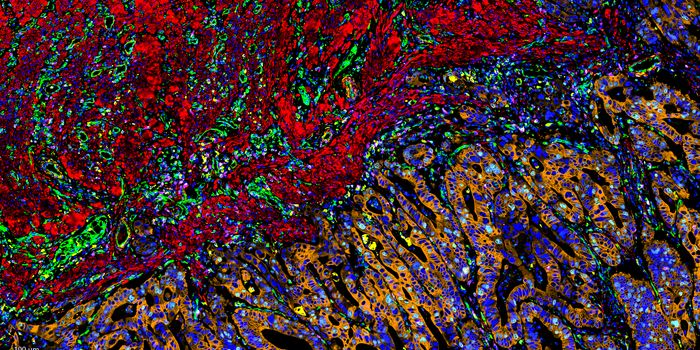Single-Cell Technology Exposes Melanoma's Weak Spot
The immune system encompasses a powerful arsenal of weapons against pathogenic threats. But what stops healthy tissues in the body from ending up as collateral damage during an immune response? There are many checks and balances to prevent this, one of which is immune checkpoints—a system that tumor cells leverage to evade destruction by T cells.
Immunotherapies called immune checkpoint inhibitors break down tumor cells’ shields, allowing T cells to destroy cancer. The problem? These drugs don’t always work, with many patients developing resistance to immune checkpoint inhibitors.
Now, a team of cancer researchers from MIT, Harvard, and Columbia has teamed up to uncover the molecular mechanism that undercuts checkpoint inhibitors' performance in melanoma patients.
To solve this complex puzzle, the team created Perturb-CITE-seq: a new technology that allows researchers to turn off individual genes in single cells and probe the downstream effects on the cells’ functions. The work was described in a Nature Genetics study.
Here, the team isolated melanoma cells and T cells from patients and grew them under lab conditions. They then applied Perturb-CITE-seq to modify 750 different genes in the cancer cells. The technique allowed them to investigate how these gene alterations impacted melanoma cells’ susceptibility to T cells. A huge library of these data from over 218,000 was amassed, for which the scientists developed a computational model to draw out patterns from the dataset.
These novel analytical tools paved the way for a breakthrough discovery: Melanoma cells with little to no expression of the CD58 protein were resistant to attack by T cells. Deleting CD58 in melanoma cell lines was also shown to protect tumor cells from immune destruction, a finding which highlights a promising drug development target.
“What is especially informative with this model is the ability to ‘treat’ a patient’s tumor with their own T cells in a laboratory setting – the same way a researcher might screen drugs in a cell line,” said the study’s co-first author Chris Frangieh.
According to the authors, Perturb-CITE-seq can help deepen our understanding of the genetic influences involved in other diseases. “Adding a protein read-out expands the types of biological questions we can ask with our screens,” said co-first author Pratiksha Thakore.
Sources: Nature Genetics, Broad Institute.









